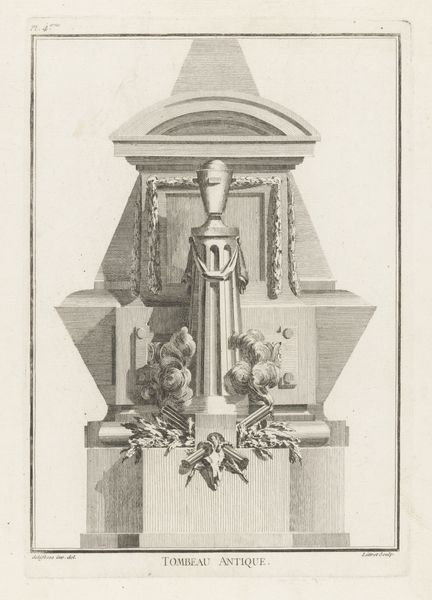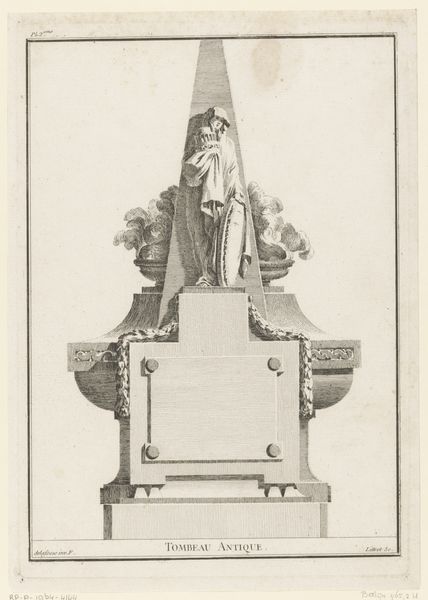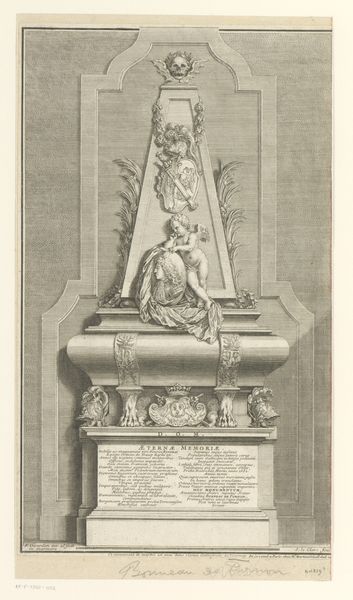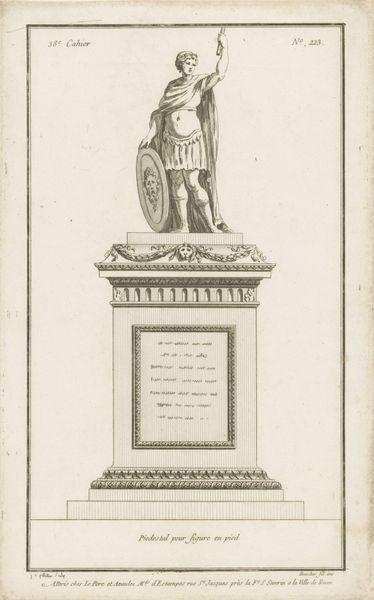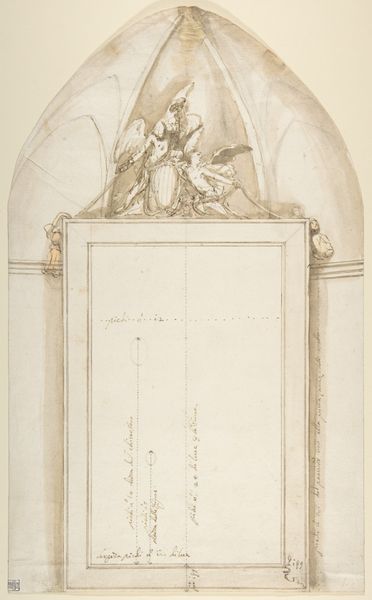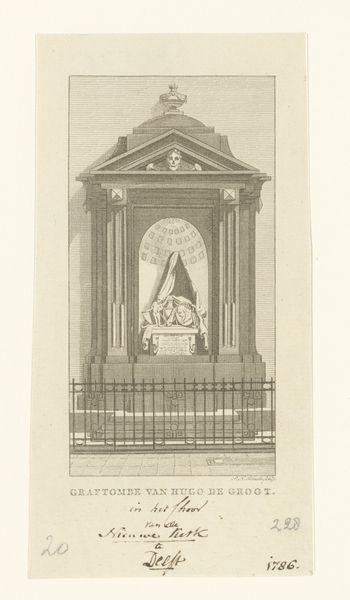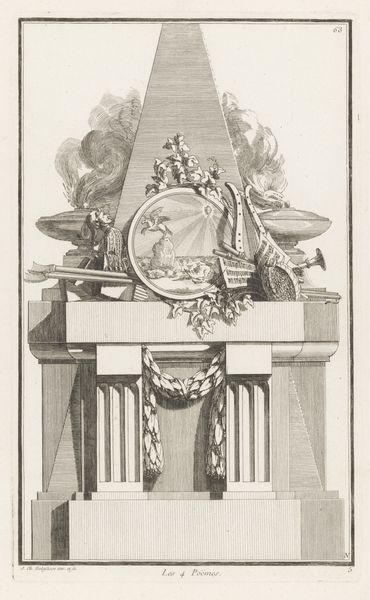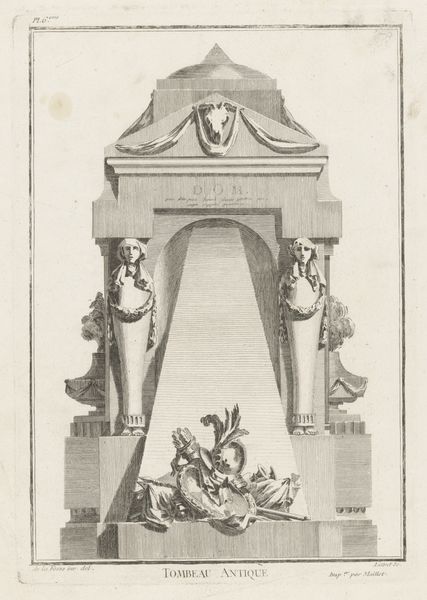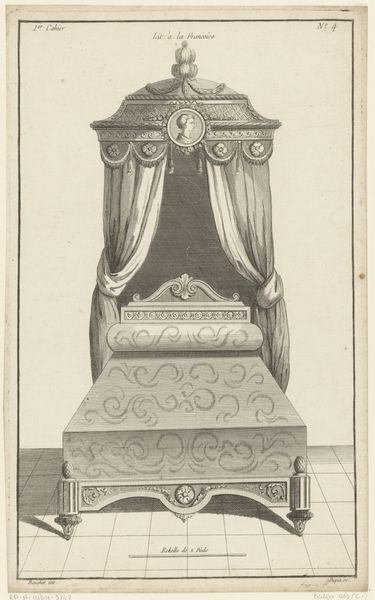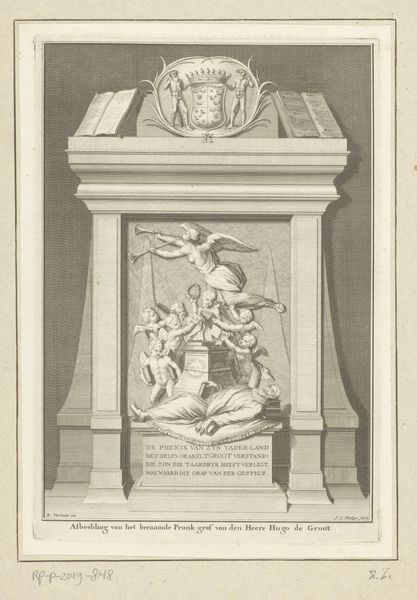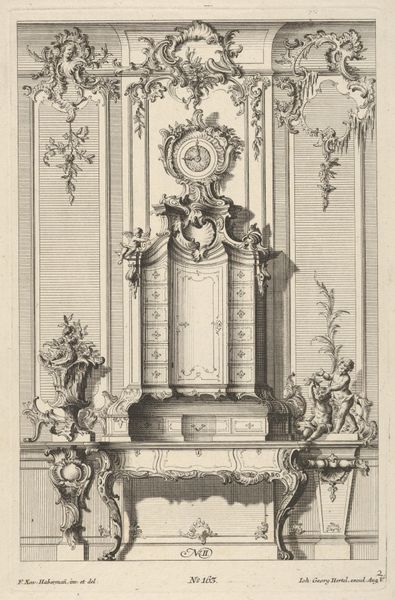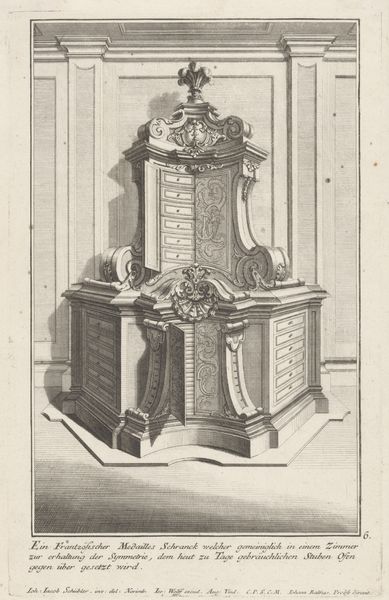
drawing, print, engraving, architecture
#
drawing
#
neoclacissism
# print
#
old engraving style
#
form
#
line
#
history-painting
#
engraving
#
architecture
Dimensions: height 310 mm, width 225 mm
Copyright: Rijks Museum: Open Domain
Curator: Let's turn our attention to this 1771 engraving by Claude-Antoine Littret de Montigny, titled "Tombe met staande figuren met fakkels," which translates to "Tomb with Standing Figures with Torches." It's currently held here at the Rijksmuseum. Editor: Striking. The stark, linear style really gives it a solemn, neoclassical feel. Almost austere in its geometric forms. I see the figures with the torches on either side, hooded and mournful. They remind me of ancient Greek statues of mourning women I saw in Rome. Curator: Indeed, the piece is a fascinating example of Neoclassical aesthetic sensibilities filtering through funerary architecture. Consider the era – the Enlightenment was challenging established norms, and this pursuit of idealized forms and subject matter had political implications as well, linking back to an imagined republican past. Editor: Right, but look closer. The torches held by the figures seem almost...inverted. Torches usually symbolize enlightenment, the flame of life, hope. Held downward, it suggests something else: extinguished potential, death, endings. What would that suggest to viewers at the time? Curator: An excellent observation. Within the funerary context and Enlightenment culture that privileged reason, the downward-pointing torches served perhaps to highlight mortality and impermanence against any utopian or revolutionary ideas. This imagery functioned within established commemorative traditions. Editor: Symbols embedded in societal structure...it gives the piece a layer of social commentary I wouldn't have noticed right away. The skull motif above, with its draped cloth, only deepens that somber feel, bringing mortality to the forefront. The severity almost seems intended to induce introspection, forcing viewers to contemplate their place in history. Curator: Exactly. De Montigny uses these neoclassical forms not just to evoke ancient grandeur but also to participate in larger discussions about life, death, and societal order. He was proposing a design for how the elite memorialized their passing, within social parameters already defined. Editor: So, what appeared initially to be just a study of geometric forms and symmetry is revealed to be saturated with layers of meaning once you examine the symbolic vocabulary in its historical moment. Curator: Precisely. These neoclassical memorial designs gained prominence, reflecting an impulse toward imposing civic order onto personal and political sentiments surrounding loss. It’s not merely about death; it's a controlled performance of mourning and power. Editor: It really shifts the understanding of the work, beyond just lines and architectural representation into cultural attitudes and power structures. Curator: Indeed, these memorial depictions reflected both neoclassical ideals and a particular vision for society’s enduring self-image.
Comments
No comments
Be the first to comment and join the conversation on the ultimate creative platform.
